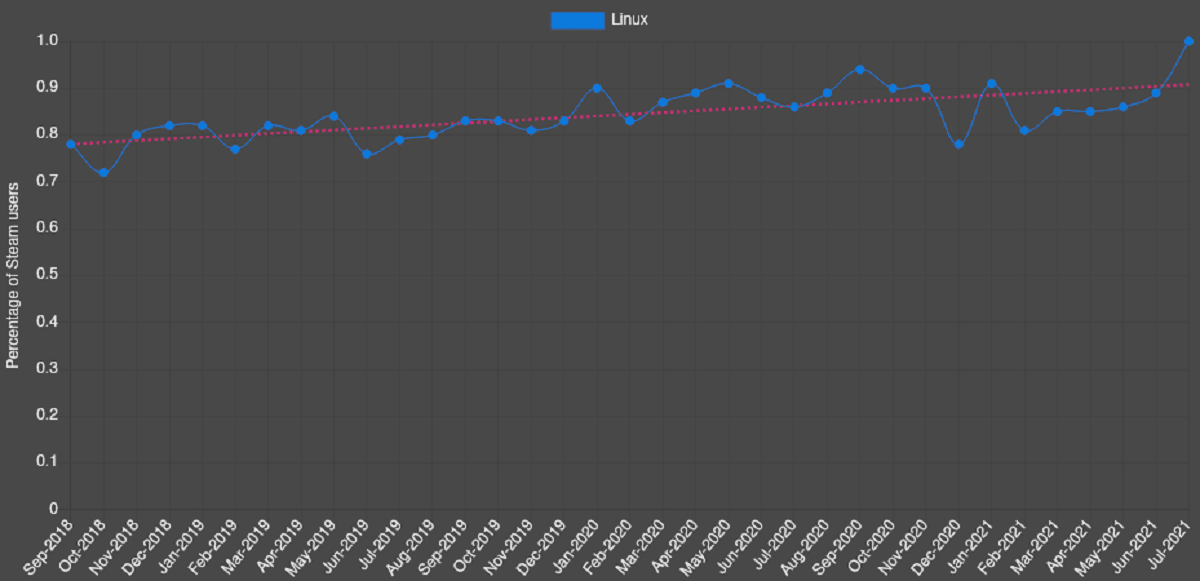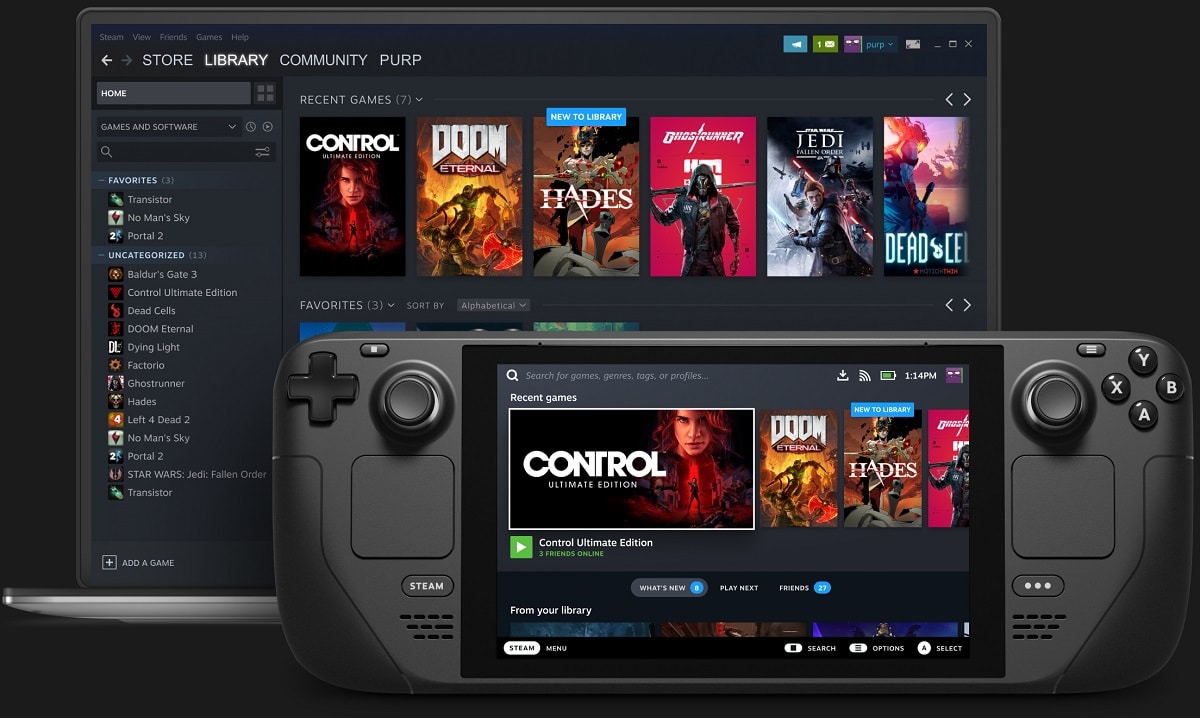
Valve released its July update for the tracker Steam Hardware Survey a few days ago, in the basically Valve shared information about the preferences of the users of the Steam game delivery service where anyone can know the regular fluctuations in the market shares of the CPU and GPU providers.
In this new report of July Valve highlights that little by little an interesting fact is happening, since according to the latest survey data, gaming on Linux is up 1% for the first time in years. This also represents a 0,14% increase over the previous month and comes just a few weeks after the company will announce Steam Deck, its new console for PC, which is expected to hit the market next fall.

And is that when Valve released Proton for Steam on Linux, promised to allow Linux gamers worldwide play the latest games available for the Windows platform, on their Linux distributions. Proton is a technology that translates Windows-specific API calls into Linux equivalents, allowing thousands of Linux gamers to play the games they wanted, but couldn't because they weren't using the Windows operating system. Following the release of Proton, a Valve study found that Linux players' market share increased to 2%.
According to the July report a month ago, this indicator was 0.89% which one the distributions that encompass this percentage They are: Ubuntu 20.04.2 is in the lead with 0.19% of Steam users, followed by Manjaro Linux with 0.11%, Arch Linux with 0.10%, Ubuntu 21.04 with 0.06% and Linux Mint 20.1 with 0.05%.
With an estimated 120 million active Steam users, the number of Linux users on Steam is about 1,2 million. The growing interest in Linux among Steam users can be attributed to the announcement of the Linux-based Steam Deck, plus it can be mentioned that the maximum number of Linux users on Steam (2%) was recorded after the end of the tests. Steam beta for Linux in 2013. Then this indicator began to decline and in 2017 it reached 0.6%, after which it began to grow slowly.
It's important to know that once Valve starts shipping Steam Deck consoles to the first users, Linux gaming market share will continue to grow. Everyone who uses the console will contribute to the growth of games on Linux, helping them reach a much higher level of adoption. The Linux gaming community will continue to grow in small steps, but with a major software and hardware developer like Valve backing it, it's likely to hit double-digit numbers in the future.
Also, AMD and Valve are working together to modernize the architecture of Linux performance scaling on AMD processors, which are used on the Steam Deck, which is being developed by Valve.
It is noted that the existing core module, which is responsible for changing the frequency of the AMD CPU according to the processing power needs of the application, is based on the outdated cpufreq ACPI driver, which does not provide the performance / power ratio efficiency desired in modern models of AMD processors due to the rather slow high-performance wake-up speed modes in the CPU (in some cases, to achieve adequate performance, users are forced to disable the automatic selection of saving modes power).
While for Linux kernel, a new architecture is being developed to control AMD CPU frequency, that will allow to achieve higher performance indicators in game applications executed under the control of the VKD3D-Proton layer (an implementation of Direct3D 12 that works through the translation of calls to the Vulkan API). On September 17, a report will be made on the work carried out at the X.Org Developers Conference 2021.
Source: https://store.steampowered.com
An article explaining how to install Manjaro KDE with ventoy to experience the closest thing to Steam OS 3
on your desktop while the Steam Deck arrives, with a title that you can think of as clck bat (bait) and a video that explains it because that 99% who do not use GNU / Linux would not know how to install MS WOS either, including this
explanation the previous step of freeing 100 Gbs of disk or adding them I think you could use it